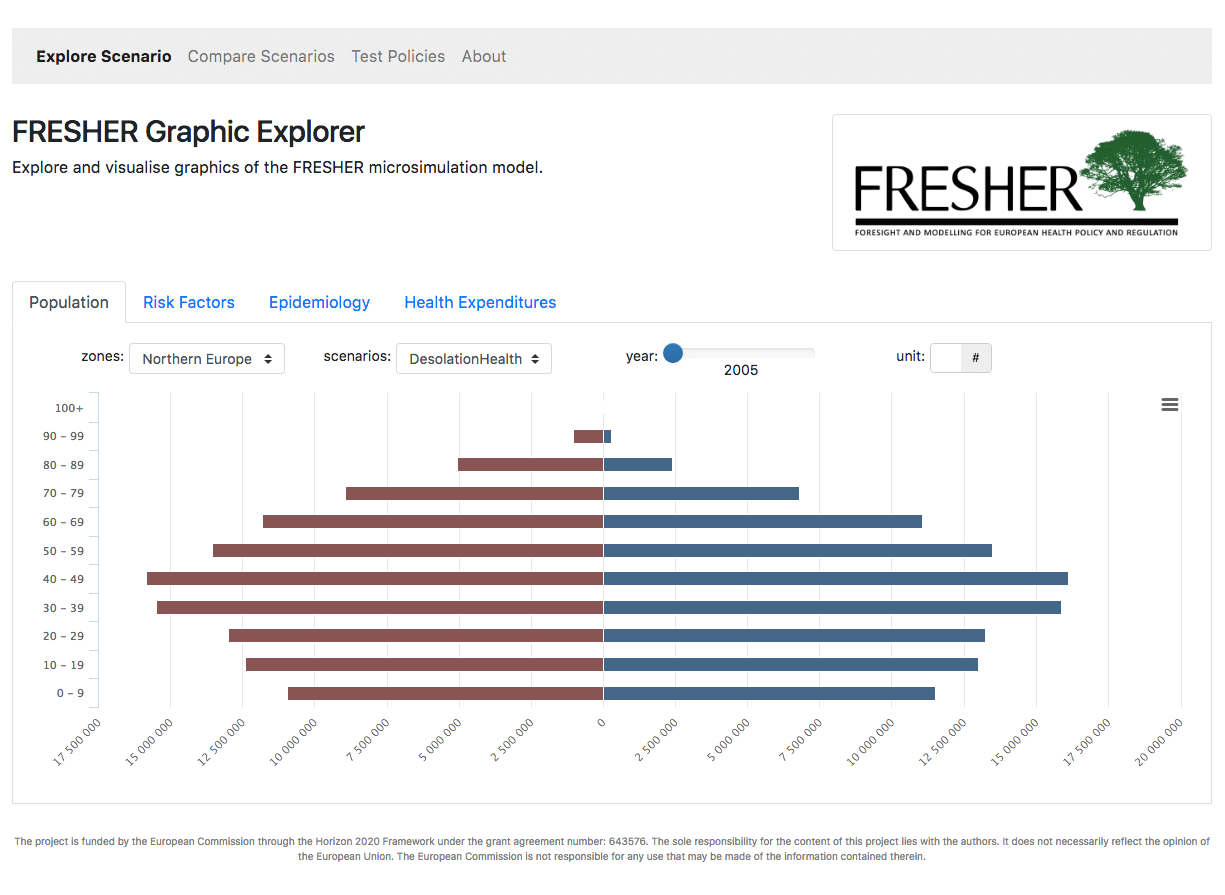The FRESHER microsimulation model predicts the future health outcomes of populations in three European zones (Southern, Northern and Central-Eastern) at the 2050 horizon. The model simulates key behavioural and physiological risk factors (smoking, alcohol consumption, obesity, physical activity, and blood pressure) and the relative risks of developing NCDs. The baseline projection explores the impact of current demographic projections on the spread of NCDs, assuming that there will be no change in the risk factors and the probability of developing NCDs that women and men of different ages have today in Europe. The FRESHER four alternative scenarios were integrated into the model assuming the expected changes in risk factors resulting from an expert’s consultation. Two additional boundary projections simulate worst and best case scenarios if all countries converged to the highest and lowest rates of risk factors observed in Europe in 2015.
The scenarios ‘The Rich Get Healthier’ and ‘Desolation Health’ would lead to increased numbers of new cases of chronic diseases (like diabetes, cancers, COPD, IHD, stroke), while the scenarios ‘Healthy Together’ and ‘We will health you’ would lead to reduced numbers of cases. The best and worst case scenarios, based on countries converging to the best and worst risk factor levels observed in 2015, have the most extreme outcomes. Dementia is a partial exception to the pattern described above: as people live older with fewer chronic diseases in the more favourable scenarios, the incidence of dementia tends to increase slightly.
The projected health impacts of the four FRESHER scenarios are important, but relatively small compared with those of underlying demographic trends. None of the scenarios is projected to offset the life expectancy gains envisaged by current population projections. This means that an increase in chronic diseases is to be expected as an effect of population ageing, which could be fuelled or mitigated to some degree by societal trends, but would not be changed fundamentally in the absence of dramatic changes in policy or human behaviour.
The final report on projecting the future social, health and economic burden of risk factors, disease and injury in the EU can be downloaded here. An accompanying scientific paper on methodology, results and recommendation for future research can be downloaded here.
